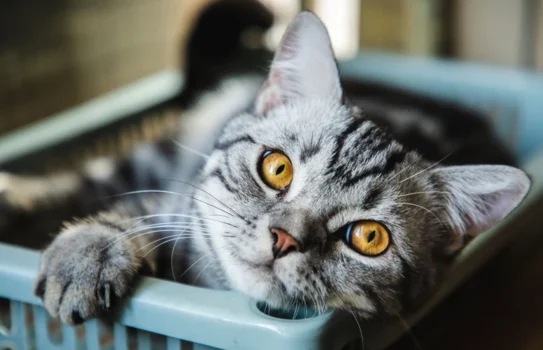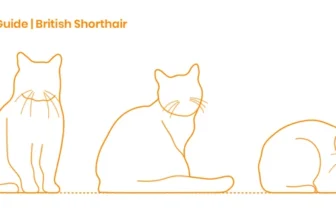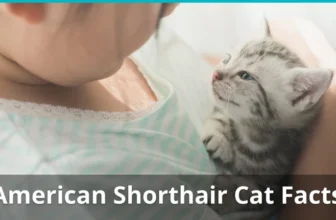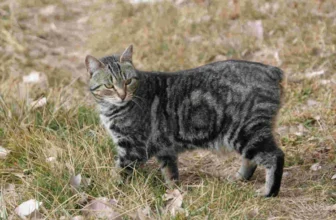As animal lovers, we all know how important it is to take care of our furry friends, and this means ensuring that their eyes are healthy too. One fascinating aspect of American Shorthairs is their wide range of eye colors, which can come in everything from piercing blue to warm gold. But have you ever wondered why some cats have certain eye colors, or what these colors might mean? In this article, we’ll dive deep into the world of American Shorthairs and explore their eye colors, how they’ve evolved over time, and how to care for them properly. So, if you’re ready to embark on a journey into the intricacies of feline genetics and anatomy, read on!
The Evolution of Eye Colors in American Shorthairs
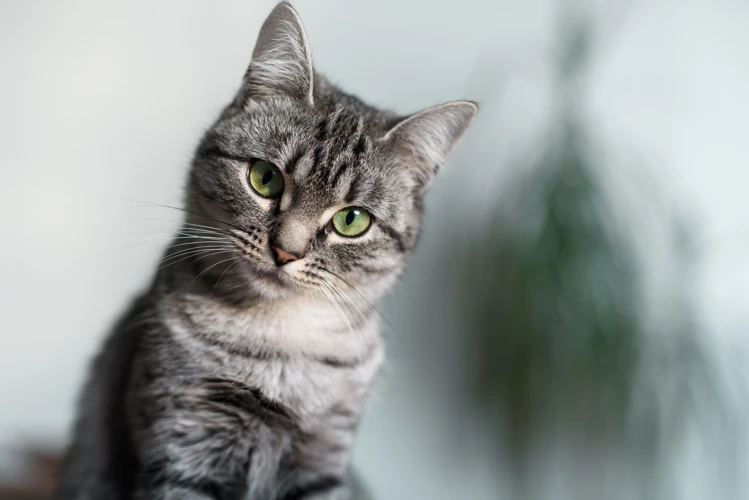
The eyes are said to be the windows to the soul, and this is no exception when it comes to our feline friends, the American Shorthair. These beautiful cats have a wide range of eye colors, each conveying a unique trait or characteristic. But have you ever wondered how their eye colors came to be in the first place? The evolution of eye colors in American Shorthairs is a fascinating area to explore and can shed light on the history of these beloved felines. From natural selection to breeding practices, the story of how American Shorthairs got their mesmerizing eyes provides a captivating insight into their journey as a breed.
Natural Selection and Eye Colors
The natural selection process played a significant role in determining the eye colors of American Shorthair cats. Eye color was not only determined by the genetics of the cat and its parents, but also by the environment in which it lived. The evolutionary process favored eye colors that provided better chances of survival for the cats in their natural habitat. For example, cats with green eyes might have been better suited for survival in wooded areas where their green eyes helped them blend in with their surroundings. Meanwhile, cats with lighter eye colors like blue would have been more suited for colder environments since they are more sensitive to light, and therefore would allow for better vision in the snow.
The genetics of the cat allowed for these environmental preferences to be passed on to the next generation, leading to a gradual shift in the eye colors of American Shorthair cats. Over time, different generations of cats aimed to produce eye colors that better adapted to their survival needs in the natural world. This shift in eye color preference also helped the cats to adapt to different regions of the world and establish the American Shorthair’s breed characteristics.
It is interesting to note that this process of natural selection and evolution is still at play today, as breeders continue to produce American Shorthairs with various eye colors. While genetics plays a significant role in determining eye color, the environment in which a cat grows up can also have an impact on its eye color. For example, if a kitten is missing certain nutrients during development, it can result in an uneven pigmentation of the eyes.
The natural selection process played a significant role in determining the eye colors of American Shorthair cats. The environment in which the cat lived was just as important as genetics in determining the color of its eyes. This fascinating evolutionary process helps to explain the range of eye colors seen in the breed today and emphasizes the importance of understanding the breed characteristics when raising and breeding American Shorthair cats.
Breeding for Eye Colors
Strong breeding practices have allowed American shorthairs to possess a diverse range of eye colors, from striking golds to enchanting greens. American Shorthair breeders are always trying to improve the colorations and patterns of their cats. Breeding for a specific eye color requires patience and skill, but it can be achieved by crossing cats with desirable traits.
One common practice is to breed two cats with the desired eye color together. If the kittens inherit the eye color genes from both of their parents, the chances of them having that specific eye color increases. Additionally, breeders will track genes of American shorthairs to avoid unhealthy traits that might affect the cat’s vision.
Another popular breeding technique is to breed cats with recessive eye colors to create a desirable dominant eye color. For example, blue-eyed American shorthairs are usually bred with green-eyed cats to increase the likelihood of the kittens having green eyes.
Breeding also takes coat patterns and features into consideration, as certain coat patterns often accompany certain eye colors. For example, white American shorthairs have a high chance of being odd-eyed, meaning each eye is a different color. This occurs due to a genetic mutation that affects melanin production in the iris. Breeders will capitalize on any trait that leads to a desirable eye color, even if it means breeding a cat only for its coat color.
Breeding for eye color isn’t only a cosmetic consideration. Eye color can be an indication of potential health problems. If a cat has mismatched eyes (heterochromia), it might have genetic abnormalities that could cause hearing or vision issues. This is why reputable breeders continually work on breeding for the correct eye shape, proportion and color.
It’s important to note that while breeders can select for certain traits, the final outcome of a kitten’s eye color is ultimately unpredictable. There’s always a chance of unexpected variations or even a cat’s eyes changing color as it grows older.
If you’re considering getting an American shorthair, researching its breed features,/importance-shorthair-cat-proportions/ is helpful for understanding the selection, breeding, and traits that are typical to the breed.
Historical Eye Color Trends
One interesting aspect of American Shorthairs is the historical trends in their eye colors. While the breed standard allows for a wide range of colors, certain shades have been more popular throughout the years.
In the 19th century, when American Shorthairs were first being bred in large numbers, green eyes were the most common. This was likely due to the prevalence of green-eyed cats in the domestic cat population at the time.
By the early 20th century, however, copper eyes became more fashionable, particularly in show cats. They were seen as a sign of good health and were more striking against the breed’s silver tabby coat.
In the 1950s and 60s, blue eyes became trendy thanks to the popularity of Siamese cats, which often have blue eyes. Some breeders experimented with breeding American Shorthairs with Siamese cats in order to achieve the blue-eyed look.
In recent years, gold eyes have become more popular, particularly in brown tabby American Shorthairs. This is likely due to their warmth and expressiveness.
It’s important to note that these trends are not set in stone and can vary from cat to cat. If you’re considering adopting an American Shorthair, don’t get too hung up on eye color – instead, focus on finding a cat with a personality and temperament that will suit your lifestyle.
If you’re interested in learning more about American Shorthairs, you may also want to check out our articles on coat patterns, features, and muscular build.
The Most Common Eye Colors: What They Mean
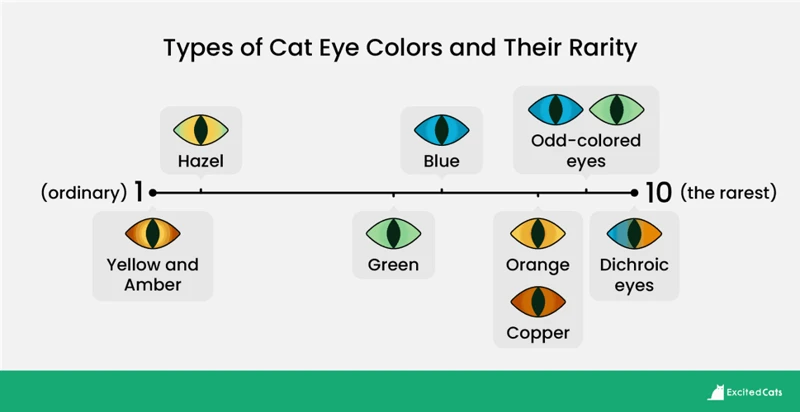
The eyes have often been referred to as the windows to the soul, and in American Shorthairs, their eye colors can reveal a lot about their personality. American Shorthairs are one of the most popular cat breeds in the United States, and their dominant eye colors are green, blue, gold, and copper. Each color can represent different traits, making it crucial for cat owners to understand what their feline companion’s eye color says about them. Let’s dive into the meaning behind the most common eye colors in American Shorthairs.
Green Eyes
Green eyes are one of the most common eye colors found in American Shorthairs. This eye color is the result of a moderate amount of pigmentation in the iris, which contains yellow and black pigments. The combination of these pigments creates a green hue.
Here are some interesting facts about American Shorthairs with green eyes:
- Green-eyed American Shorthairs are often described as having a mysterious and captivating gaze.
- According to a survey conducted by the Cat Fanciers’ Association, green is the third most popular eye color for American Shorthairs, with around 16% of cats having this eye color.
- Green eyes can come in various shades from a yellowish-green to a deep emerald green.
- In some cases, green-eyed American Shorthairs can have a ring of gold or another color around the pupil, which is known as a halo.
What do green eyes say about your American Shorthair?
- Green eyes are often associated with intelligence and curiousness, which can be reflective of an American Shorthair’s curious and playful nature.
- This eye color is also believed to be linked with independence and a strong personality, traits that can be seen in American Shorthairs who have a reputation for being confident and self-assured.
- Green-eyed American Shorthairs may have a tendency to be more active and playful than cats with other eye colors, which can make them great companions for families or individuals who enjoy interactive playtime with their pets.
Caring for your American Shorthair’s green eyes
- Regular grooming and cleaning around the eyes will help keep them healthy and clear, which can prevent various eye conditions that affect cats.
- Try to avoid exposing your American Shorthair’s eyes to direct sunlight for extended periods of time, as this can damage their delicate eyes.
- If you notice any unusual discharge, cloudiness, or redness in your cat’s eyes, it’s important to consult with a veterinarian to rule out any underlying medical conditions.
Green eyes are a beautiful and unique feature of American Shorthairs. Understanding what their eye color may mean about their personality traits can help pet owners better understand and care for their beloved feline companions.
Blue Eyes
Blue eyes are one of the most striking and sought-after eye colors in American Shorthairs. They are considered to be a recessive trait, which means that both parents must carry the gene for their offspring to have blue eyes. Here are some interesting facts and information about blue eyes in American Shorthairs:
- Genetics: Blue eyes are caused by a lack of melanin in the iris, giving a blue appearance. It is a recessive trait, which means that cats must inherit two copies of the blue-eyed gene (one from each parent) to have blue eyes.
- Appearance: Blue eyes can range in shades, with some cats having bright blue eyes, while others may have a more muted grey-blue color. It is also common for adult cats with blue eyes to develop a yellow-green ring around the pupil as they age.
- Personality: Some people believe that cats with blue eyes have a unique personality, often describing them as being more affectionate and loving than cats with other eye colors. However, this has not been scientifically proven and may just be a personal observation.
- Health: While blue eyes themselves do not indicate any health problems, it is important to note that cats with white fur and blue eyes are more prone to deafness. This is because the gene that causes white fur can also affect the development of the inner ear.
Blue eyes are a stunning and sought-after feature in American Shorthairs. While they do not necessarily indicate any personality traits or health problems, it is important to understand the genetics behind blue eyes and be aware of any potential hearing problems that may arise in cats with white fur and blue eyes.
Gold Eyes
Gold eyes are a luscious and mysterious eye color often possessed by American Shorthairs. This rare eye color has a unique charm that many cat lovers find irresistible.
Gold eyes have a very distinct look – they have a rich warm color, almost like a deep amber. They appear bright and striking in the light, with flecks of green or brown. Interestingly, golden eyes are most commonly seen in black or brown American Shorthairs.
| Eye Color | Meaning |
|---|---|
| Gold | Creativity and intelligence |
| Green | Curiosity and playfulness |
| Blue | Calmness and gentleness |
| Copper | Sociability and affection |
Genetically, gold eyes may occur when there is a moderate amount of melanin in the iris, giving them a unique and beautiful color. It is important to note that cats with gold eyes are not more valuable than those with different eye colors, as beauty is in the eye of the beholder.
In terms of their meaning, gold eyes are associated with creativity and intelligence. These American Shorthairs are known to be curious, smart, and resourceful. They have a playful, confident, and affectionate personality, making them a popular pet choice.
However, like any eye color, gold eyes may also be prone to certain eye problems, such as cataracts, glaucoma, and conjunctivitis. It is important to keep an eye on your cat’s eye health and visit a veterinarian if any issues arise.
Gold eyes add a touch of mystique and allure to American Shorthairs, making them even more charming and special.
Copper Eyes
American Shorthairs with copper eyes have a stunning, shimmering gaze that can easily capture anyone’s attention. Copper eyes have a warm, slightly amber tone that can range from light to dark. These beautiful eyes are the result of a combination of genetics and the amount of pigment present in the iris.
One factor that influences the appearance of copper eyes is the lighting. When exposed to bright sunlight, copper eyes can appear to be a brilliant and sparkling gold color. However, in dimmer lighting conditions, copper eyes will seem to have a more muted amber color.
The coloration of copper eyes is caused by the presence of a pigment called pheomelanin. This pigment is also responsible for the red and orange hues in fur, so it is not uncommon for American Shorthairs with copper eyes to have a coat with a similar reddish tint.
It is interesting to note that copper eyes are not a common eye color in American Shorthairs. However, they are highly sought after by breeders and cat lovers alike. The rarity of this eye color makes it a prized characteristic amongst American Shorthair enthusiasts.
Cats with copper eyes are known to have charming personalities. They are often characterized as loving, affectionate, and loyal companions. If you are lucky enough to share your home with an American Shorthair with copper eyes, you can expect to have a delightful and devoted companion by your side.
Some interesting facts about copper eyes:
- Copper eyes are not linked to any specific coat color and can be found in cats of all colors and patterns.
- In some lighting conditions, copper eyes can appear to have a green tint.
- Copper eyes are more common in certain breeds, such as the Abyssinian and the Bengal.
- A cat with one blue eye and one copper eye is not considered to have heterochromia, as both eyes have the same amount of pigment.
Copper eyes are a unique and beautiful eye color that can add a touch of warmth to an American Shorthair’s appearance. If you are considering adopting an American Shorthair, keep an eye out for this rare and stunning eye color.
Odd-Eyed American Shorthairs
Odd-eyed American Shorthairs are a rare but stunning occurrence in the breed. This unique eye color is the result of a genetic mutation that causes one eye to be a different color than the other. Typically, one eye will be blue while the other is green or gold. It is estimated that only about 1 in 4000 American Shorthairs will have this trait, making them a sought-after and intriguing addition to any family.
Genetics and Inheritance
The odd-eyed trait is a result of a gene mutation that affects the development of the pigments in the iris of the eye. This mutation is known as incomplete dominant inheritance, which means that a cat only needs to inherit one copy of the gene from one parent to express the trait. The gene that causes odd eyes is unrelated to other coat color genes, so a cat can have any coat color or pattern and still have odd eyes.
Characteristics of Odd-Eyed American Shorthairs
Apart from the unique eye color, odd-eyed American Shorthairs do not have any distinct physical characteristics that distinguish them from other cats in the breed. They come in a variety of coat colors and patterns, and their personalities are also diverse. However, some owners of odd-eyed American Shorthairs report that their cats have a more independent and curious temperament than other cats.
Why Are Odd-Eyed American Shorthairs Unique?
The genetic mutation that causes the odd-eyed trait is extremely rare in domestic cats. Additionally, the contrast between the two different eye colors is often striking and captivating. This combination of rarity and beauty makes odd-eyed American Shorthairs highly desirable to pet owners and breeders alike.
To sum it up, Odd-eyed American Shorthairs are a unique and rare occurrence in the breed, but they don’t have any distinct physical characteristics apart from their striking eye colors. This trait is the result of a genetic mutation that affects the development of the pigments in the iris and is inherited in an incomplete dominant manner. The rarity and beauty of odd-eyed American Shorthairs make them a highly sought-after addition to any family.
| Trait | Description |
|---|---|
| Eye Color | One blue eye and one green or gold eye. |
| Coat Color and Pattern | Varies depending on the individual cat. |
| Physical Characteristics | No distinct physical characteristics apart from odd eyes. |
| Temperament | May have more independent and curious personalities than other cats. |
| Genetics | Result of a gene mutation inherited in an incomplete dominant manner. |
Uncommon Eye Colors: Why They’re Unique
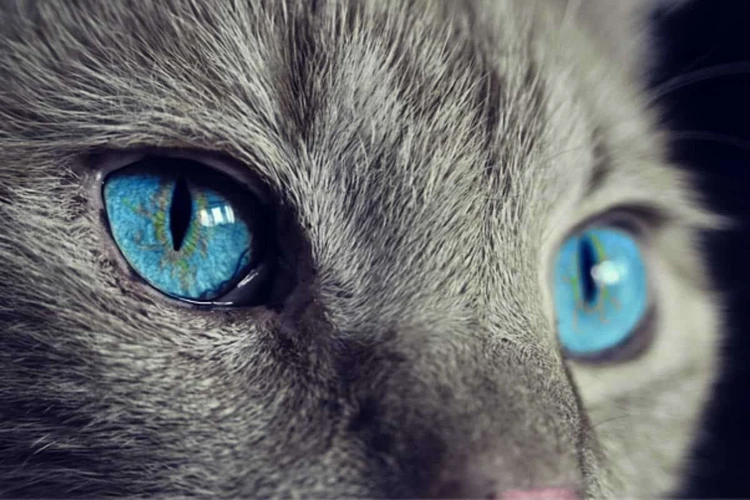
If you’ve ever come across an American Shorthair with striking uncommon eye colors, you might have been left wondering how they ended up with such a unique feature. While green, blue, gold, and copper are the most common eye colors in this breed, there are some individuals with yellow, odd, or even mismatched eyes. In this section, we’ll delve into the reasons behind these uncommon eye colors in American Shorthairs and why they make our feline friends stand out from the crowd.
Yellow Eyes
Yellow eyes are a relatively uncommon eye color for American Shorthairs, but they can be quite striking. Unlike gold eyes, which have a warm, amber tone, yellow eyes are a bright, almost neon yellow that can really pop against a black or gray coat.
The genetics behind yellow eyes are not well understood, but they are thought to be caused by a combination of genes that regulate pigmentation. It is possible that yellow eyes are simply a variation of gold eyes, with a different expression of the pigmentation genes.
While yellow eyes are generally considered an attractive trait in American Shorthairs, they can also be a sign of health issues. In some cases, yellow eyes can be a symptom of liver problems, such as hepatitis or cirrhosis. If your cat’s eyes suddenly turn yellow, it is important to take them to a veterinarian right away to rule out any serious health issues.
If your American Shorthair has yellow eyes, it is important to keep an eye on their eye health and watch for any changes in appearance or behavior. Regular grooming and cleaning can help keep your cat’s eyes healthy and free from infections. Keeping your cat’s living space clean and free from irritants can also help prevent eye problems.
In general, yellow eyes are considered a desirable trait in American Shorthairs, but it is important to remember that they can also be a sign of health issues. If you are considering adopting an American Shorthair with yellow eyes, make sure to observe their behavior and appearance closely, and don’t hesitate to take them to a veterinarian if you have any concerns.
Heterochromia
Heterochromia is a fascinating eye condition that produces a unique and striking appearance in American Shorthairs. This condition occurs when an individual has two different colored eyes. Heterochromia can be complete, where one eye is a completely different color than the other, or partial, where only a portion of one eye is a different color.
It’s important to note that heterochromia doesn’t just affect American Shorthairs, but it can occur in several other species as well, including humans. In fact, many people find this condition quite beautiful and even consider it a desirable trait.
Causes of Heterochromia
Heterochromia can either be genetic or acquired later in life. Genetic heterochromia occurs when an individual inherits different color genes from their parents. Acquired heterochromia can arise due to injury, inflammation, or other underlying health conditions.
Types of Heterochromia
There are three main types of heterochromia that can occur in American Shorthairs.
1. Complete Heterochromia: In this type, one eye is a completely different color than the other. For example, one eye may be blue, while the other is green.
2. Sectoral Heterochromia: In this type, only a section of one eye is a different color than the rest. This can create a beautiful and unique “mosaic” appearance in the eye.
3. Central Heterochromia: In this type, the center of the iris is a different color than the outer edge. This can create a striking and unusual appearance in the eyes.
Maintaining Eye Health with Heterochromia
While heterochromia is usually a harmless condition, it’s important to keep an eye out for any changes in eye color or other symptoms. It’s essential to keep up with regular veterinary check-ups and report any concerns to your veterinarian.
Maintaining good eye hygiene is especially important for American Shorthairs with heterochromia. Regular cleaning can help prevent infection and keep their beautiful eyes healthy. Grooming and cleaning the area around the eyes can reduce the risks of irritation and inflammation, which can cause discomfort for your pet.
Heterochromia adds a unique and stunning feature to American Shorthairs. This condition can occur in different types, and it is essential to maintain your pet’s eye health to avoid any complications. If you notice any changes in eye color or other symptoms, it’s vital to seek veterinary advice.
Rare Eye Colors
American Shorthairs are known for their beautiful and varied eye colors, which can range from classic green to stunning copper. While certain eye colors are more common than others, there are also some rare eye colors that are found in American Shorthairs.
Table of Rare Eye Colors in American Shorthairs
| Eye Color | Description | Possible Health Issues |
|---|---|---|
| Violet | A rare mix of blue and red pigmentation in the eyes that results in a stunning purple hue. | None reported |
| Black | An extremely rare eye color that appears black due to the high concentration of melanin in the iris. | None reported |
| Pink | Caused by the lack of pigment in the iris, resulting in a delicate and unique pink color. | Increased sensitivity to bright light |
One of the rarest eye colors found in American Shorthairs is violet. This unique hue comes from a mix of blue and red pigmentation in the eyes, which results in a stunning purple color. Although violet eyes are rare, they are not associated with any health issues in American Shorthairs.
Another rare eye color that can occasionally be found in American Shorthairs is black. Black eyes are extremely rare and occur due to the high concentration of melanin in the iris. While black eyes are not considered harmful to a cat’s health, the dark color may make it harder to see the pupils in low light.
In addition to violet and black eyes, some American Shorthairs may also have pink eyes. Pink eyes are caused by a lack of pigment in the iris, which results in a pale pink or white color. Although pink eyes in American Shorthairs are rare, they may make the cat more sensitive to bright light.
While rare eye colors are fascinating to see, it’s important to note that they do not necessarily indicate any health issues or genetic abnormalities in American Shorthairs. As with any breed, it’s important to take your cat for regular check-ups with a veterinarian to ensure their overall health and wellbeing.
How to Care for Your American Shorthair’s Eyes
When it comes to taking care of your beloved American Shorthair, their eyes are one of the most important features to keep healthy. Proper care and attention to your cat’s eyes can prevent potential health issues and ensure their overall well-being. But where do you start? Here, we’ll explore some simple and effective ways to care for your American Shorthair’s eyes, from grooming to identifying common eye conditions. Let’s take a closer look at what you can do to keep your furry friend’s eyes healthy and happy.
Grooming and Cleaning for Eye Health
Taking care of your American Shorthair’s eyes is essential to ensure their lifelong health. Proper grooming and cleaning can help prevent eye infections and other eye-related problems. Here are some grooming and cleaning tips to keep your cat’s eyes healthy:
| Grooming | Cleaning |
|---|---|
| Trim your cat’s fur around the eyes: Long fur around the eyes can cause irritation and eye infections. Use small scissors or clippers to trim the fur carefully. | Clean the eye area: Use a soft, damp cloth or cotton ball to clean the area around your cat’s eyes. Be gentle and avoid getting water or soap directly in their eyes. |
| Check for discharge: Look in your cat’s eyes regularly and check for any discharge. If you see any, wipe it away with a damp cloth and monitor their eyes closely. | Use eye drops: If your cat has dry eyes or other eye conditions, your veterinarian may prescribe eye drops to help keep their eyes moist and healthy. |
| Wash your hands: Before and after handling your cat’s eyes, always wash your hands thoroughly with soap and water to prevent the spread of germs. | Monitor their behavior: Keep an eye on your cat’s behavior and look for signs of discomfort or pain around their eyes. If you notice anything unusual, contact your veterinarian right away. |
By following these grooming and cleaning tips, you can help maintain your American Shorthair’s eye health and prevent any potential problems from arising. Keep in mind that if you notice anything unusual or concerning about your cat’s eyes, it’s always best to contact your veterinarian for advice.
Common Eye Conditions in American Shorthairs
Just like any other breed of cat, American Shorthairs can experience an array of eye problems. Some of the most common eye conditions that affect them include:
- Conjunctivitis: This is a common eye condition in cats that affects the conjunctiva, a thin and transparent membrane that covers the sclera and inner eyelids. Conjunctivitis can occur as a result of bacterial or viral infections, allergies, or irritants. Symptoms include redness, swelling, discharge, and itching around the eyes. Prompt treatment is essential to prevent complications.
- Corneal Ulcers: Corneal ulcers are erosions or open sores that occur on the cornea, the clear outer layer of the eye. They can be caused by infections, trauma, or eyelid abnormalities. Symptoms of corneal ulcers include squinting, tearing, redness, and discharge from the affected eye. Treatment typically involves antibiotics and anti-inflammatory medication, but severe cases may require surgery.
- Cataracts: Older American Shorthairs, like all cats, are more prone to developing cataracts, a clouding of the eye’s lens that can progress and eventually lead to vision loss. Cataracts can be caused by genetics, diabetes, or other underlying health conditions. Symptoms include blurred, hazy vision and difficulty seeing at night. Treatment for cataracts typically involves surgery to remove the affected lens and replace it with an artificial one.
- Glaucoma: Glaucoma is a condition characterized by increased pressure in the eye that can damage the optic nerve and lead to blindness. It can occur as a primary condition or secondary to other eye problems such as cataracts. Symptoms of glaucoma include redness, discomfort, and a cloudy-looking eye. Emergency treatment is required to decrease intraocular pressure and prevent further eye damage.
- Epiphora: Epiphora is a condition that causes excess tearing of the eyes, leading to a discharge that may stain the fur around the eyes. It can be caused by eyelid abnormalities, allergies, or infections. Diagnosis and treatment of epiphora depend on the underlying cause.
It’s important to keep a watchful eye on your American Shorthair’s eyes and seek prompt veterinary care if you notice any unusual symptoms or changes in their eye health. Catching eye problems early can prevent more serious complications down the line, and ensure that your cat enjoys a lifetime of clear vision and good eye health.
When to See a Veterinarian
As a responsible pet owner, it’s important to keep an eye out for any changes in your American Shorthair’s eyes. However, there are certain situations that require the attention of a veterinarian. Below are some signs to look out for that may indicate a need to seek professional help:
- Eye Discharge: If you notice any pus, mucus, or watery fluid coming from your cat’s eyes, it may be a sign of infection.
- Red or Swollen Eyes: Redness and swelling around the eyes may also indicate an infection or an injury.
- Cloudy Eyes: Cloudiness in the eyes can indicate a variety of issues, including cataracts or glaucoma.
- Changes in Eye Color: If you notice a sudden change in your American Shorthair’s eye color, this could be a sign of an underlying health condition.
- Scratching or Rubbing: If your cat is constantly scratching or rubbing their eyes, it could be a sign of irritation or an infection.
- Squinting: If your cat is frequently squinting or keeping their eyes closed, this could be a sign of pain or an eye injury.
- Changes in Vision: If you notice your cat bumping into things or having difficulty navigating their surroundings, it’s important to seek veterinary attention immediately.
Keep in mind that these symptoms can be indicative of a range of issues, from minor irritations to more serious health conditions. If you notice any of these symptoms, it’s important to take your American Shorthair to a veterinarian as soon as possible to determine the cause and receive proper treatment.
Conclusion
As we explored the wide range of eye colors in American Shorthairs, it became apparent that eye color is not just a cosmetic feature, but can also provide insight into the cat’s overall health and genetics. From the evolution of eye colors through natural selection and breeding to historical trends and the common and uncommon eye colors in American Shorthairs, we learned that each color has its own unique characteristics and meanings.
Taking care of your American Shorthair’s eyes is essential for their overall well-being. Regular grooming and cleaning can help prevent common eye conditions and detect any potential issues early on. It’s also important to know when to seek veterinary care if you notice any changes or abnormalities in your cat’s eyes.
In conclusion, American Shorthairs come in a wide range of eye colors, each with its own fascinating story. By understanding the evolution and biology behind these colors, we can better appreciate and care for our feline companions. Remember to always prioritize your cat’s eye health, and enjoy their beautiful and unique eyes as a testament to their breed’s diversity.
Frequently Asked Questions
What is the most common eye color in American Shorthairs?
The most common eye color in American Shorthairs is green.
Can an American Shorthair have blue eyes?
Yes, it is possible for an American Shorthair to have blue eyes, but it is less common than green or gold eyes.
What causes heterochromia in American Shorthairs?
Heterochromia can be caused by a genetic mutation or injury to the eye. It is more common in white American Shorthairs.
Are odd-eyed American Shorthairs rare?
Yes, odd-eyed American Shorthairs are considered rare and highly sought after by breeders and cat lovers.
What is the historical significance of eye color in American Shorthairs?
Eye color has been an important factor in the breeding and development of American Shorthair as a distinct breed with desirable physical characteristics.
What is the best way to clean an American Shorthair’s eyes?
You can clean your American Shorthair’s eyes with a cotton ball or soft cloth moistened with warm water. Avoid using harsh chemicals or strong fragrances that may irritate their eyes.
What are some common eye conditions to watch for in American Shorthairs?
Some common eye conditions in American Shorthairs include conjunctivitis, cataracts, glaucoma and corneal ulcers. Regular check-ups with a veterinarian can help detect and treat these conditions.
Is it necessary to groom an American Shorthair’s eyes?
Yes, regular grooming and cleaning of an American Shorthair’s eyes can prevent infections and other health problems. It can also keep their eyes looking bright and healthy.
What is the significance of copper-colored eyes in American Shorthairs?
Copper-colored eyes are highly prized and considered a sign of good breeding in American Shorthairs. They are often seen in cats of the silver tabby variety.
Do American Shorthairs with copper-colored eyes require special care?
No, American Shorthairs with copper-colored eyes do not require any special care as long as their eyes are kept clean. However, they are prone to the same eye conditions as cats with other eye colors.

